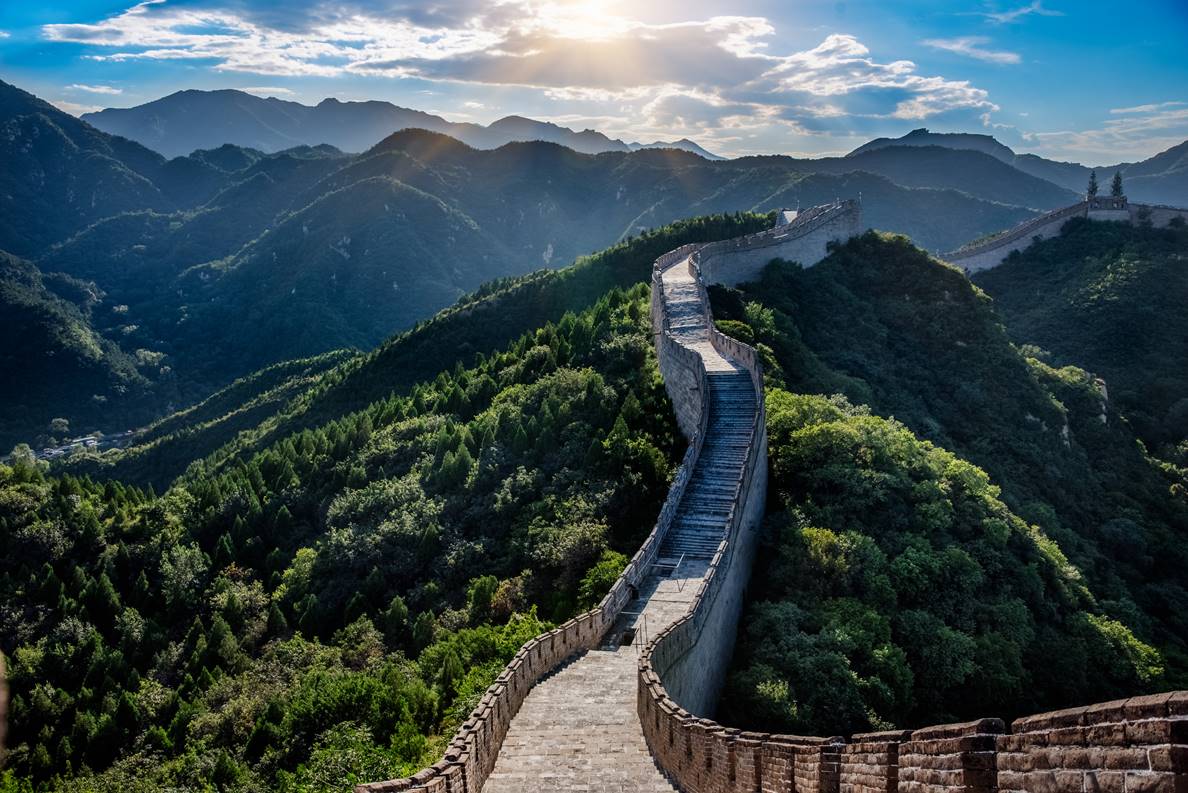Great Wall of China

The Great Wall of China is not in a single long line! It is indeed a defensive network consisting of many walls and forts built in different historical periods, with some segments scattering while some running parallel. In some places, the wall doubles or even triples itself.
During the 2,500 years from 7th century BC to 19th century AD, more than 20 dynasties and states had undertaken the construction of the walls, section by section, bit by bit. Today’s best-known and best-preserved walls were results from the Ming Dynasty’s massive construction begun around 1381. The Ming Great Wall wound its 5,500 miles’ (8,851.8 km) course from Hushan in the east to Jiayuguan in the west. Another archaeological survey found that the entire wall with all of its branches measures out to be 21,196 km (13,171 mi) equal to half the length of the Equator.
The average height of the walls is 6 to 7 meters (20 to 23 feet), and the highest is 14 meters (46 feet). The average width is 6.5 meters (21.3 feet). The altitudes of the walls vary – the highest point is the Huanglouyuan in the northwest suburb of Beijing, with an elevation of 1,439.3 meters (4,722 feet), while the lowest point is at Laolongtou in Hebei, just above the sea level.
The Great Wall is more than 2,500 years old. But in fact, almost everything which is that old is no more than a mound of earth. The popular idea of the Wall derives from the stone, battlement structure built by the Ming dynasty and its maximum age is about 500 years.
In 2,500 years of construction history of the massive project, more than 1,000, 000 laborers had been used, including civilians, soldiers, and convicts. It was a special punishment for convicted criminals during the Qin (221 – 207BC) and Han (202BC – 220AD) Dynasties. The toilsome work took many lives. It is estimated that around 400,000 builders died, and some are said to be buried in the long wall. That gives the dreadful saying of the Longest Cemetery in the World. However, no bones have ever been found in the Wall and there is no evidence, written or archaeological.
Scientists say that during the Ming dynasty, workers incorporated sticky rice into the mortar that held together sections of the Great Wall. That mortar bound the bricks so tightly that even today, hundreds of years later, weeds still don’t grow in between them. It turns out that an ingredient in sticky rice porridge, amylopectin, formed a microstructure with the calcium carbonate in the mortar, giving it superstrength.
For thousands of years, the Great Wall to some extent acted like both a physical and mental barrier between the central Chinese Empire and the barbarian northern nomads, but this only worked for the underdog. Several strong nomadic tribes in history had managed passage across the barrier. In early 19th century, the immense scale of the Wall had once given rise to a rumor that it could be seen from the moon with naked eyes. According to NASA, the Great Wall is made from the same materials as the surrounding land, so it’s difficult to perceive with the naked eye from space.
As a must-see in China, it attracts 50 million visitors every year, and had been visited by more than 460 state heads and VIPs from around the world.
The Great Wall is changing all the time. To be specific – it is disappearing year by year. According to statistics from UNESCO, nearly one third of the walls have already disappeared.




